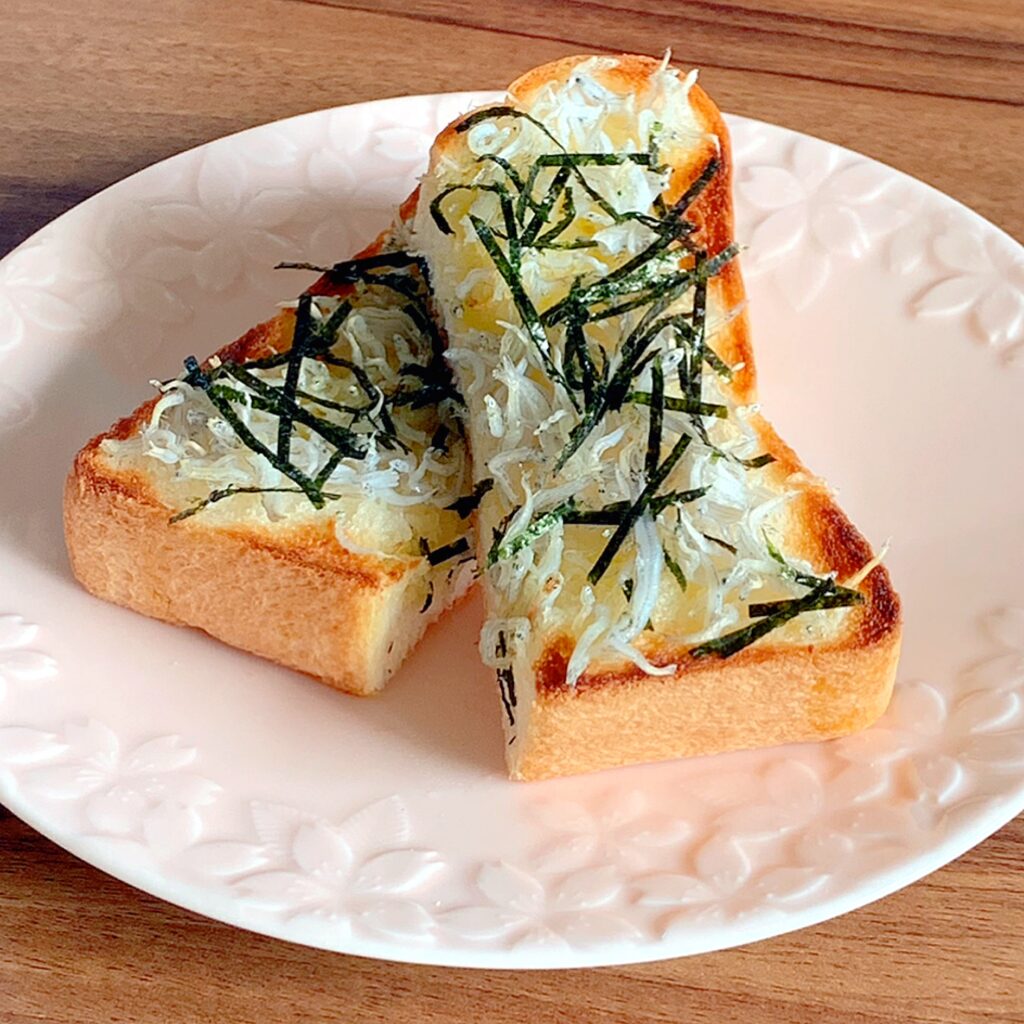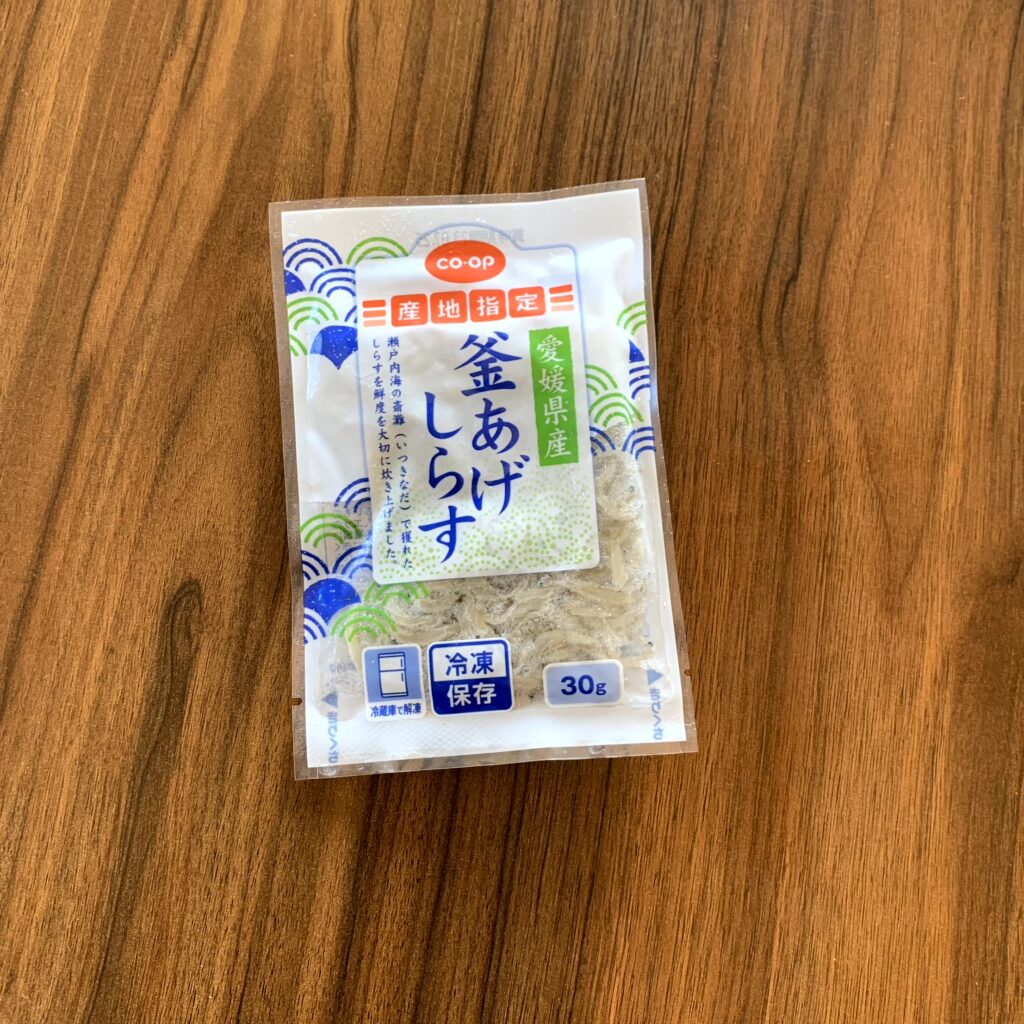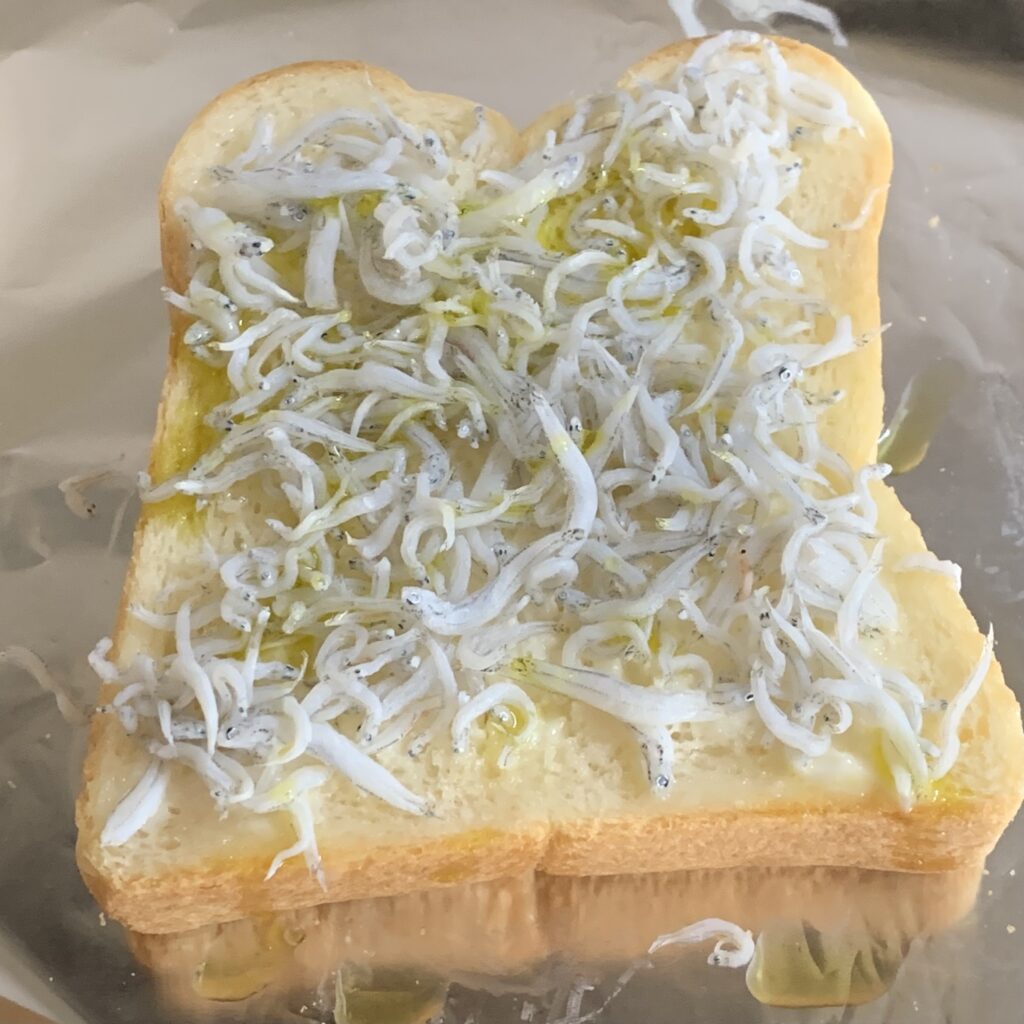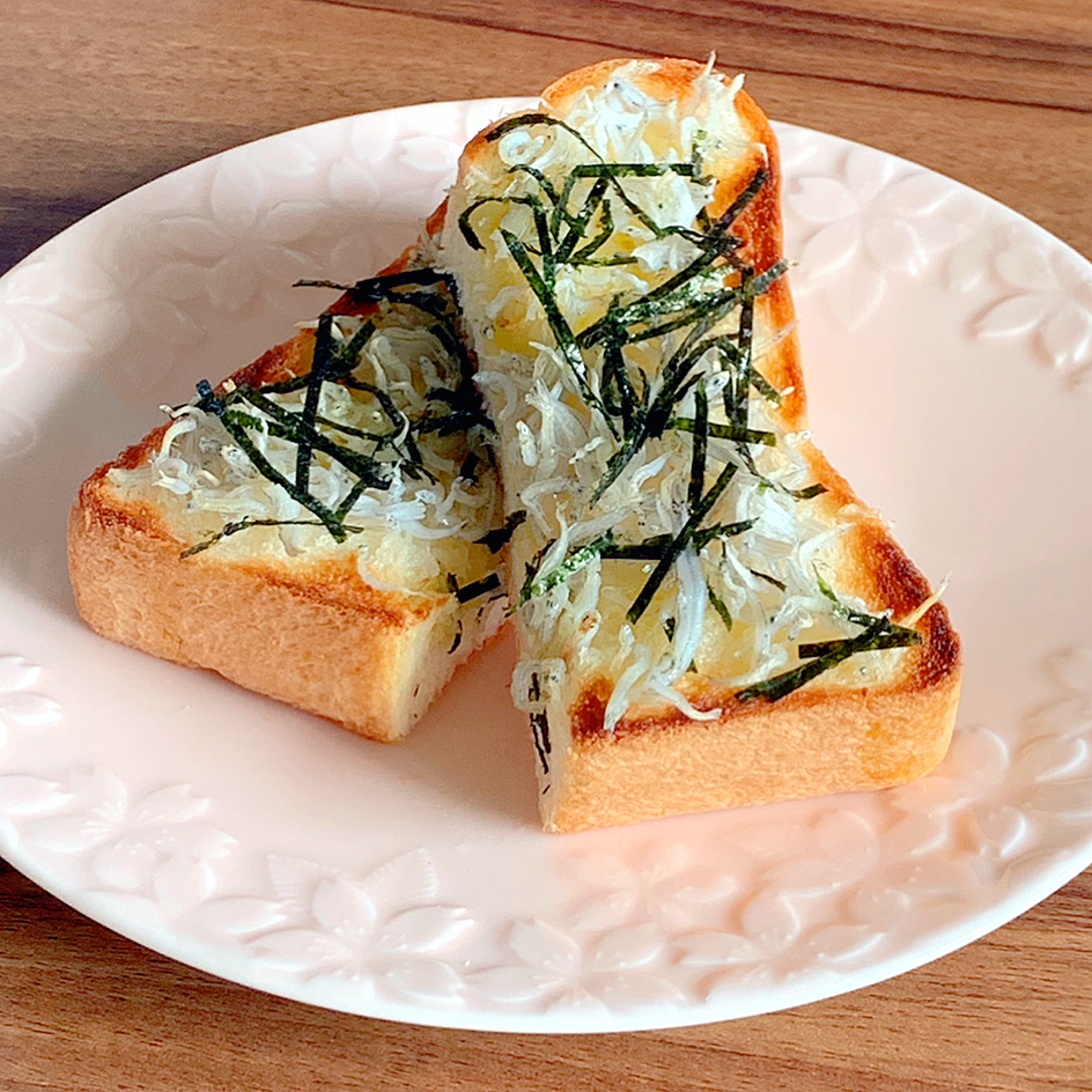
Homemade shokupan Kamaage Shirasu toast(しらすトースト)
What kind of dish is Homemade shokupan Kamaage Shirasu toast??
Shokupan = Japanese White Bread
To make shirasu toast, you simply spread butter on soft Japanese shoku pan bread, top it with plenty of kamaage shirasu (boiled whitebait), and bake it in the toaster. Finally, top with nori seaweed. Add a little bit of olive oil for a secret flavour.
One of the attractions of this toast is that it allows you to easily replenish calcium and protein from the whitebait.
The crispness of Japanese white bread, the saltiness of shirasu, the richness of butter, and the aroma of seaweed go surprisingly well together.The harmony of these ingredients has captured the hearts of many Japanese people.
It is also delicious when combined with mayonnaise, cheese, shiso, etc. Try making your own shirasu toast with your favorite toppings.
You’ll be able to expand your toast recipes and look forward to breakfast.
What kind of food is kamaage shirasu??
shirasu = whitebait
“Shirasu” is a general term for young sardines.It is a product that is boiled in salt water and then dried.
The name changes depending on the moisture content after boiling. The ones with a moisture content of 90-80% are called “shirasu,kamaage shirasu”, those with a moisture content of 70-65% are called “shirasu boshi”, and those with a higher degree of dryness are called “chirimenjako”.
The soft texture of kamaage shirasu is the best to use in this toast recipe.

Why Shirasu Toast became famous
Shirasu toast has gradually become popular throughout the country since it appeared in the popular manga “Our Little Sister,” which was made into a movie in 2015.
Shirasu toast is apparently a menu that was served at “Kinema Shokudo” in Kamakura, where the movie was set. Unfortunately, the restaurant is currently closed.
The actresses who played the four sisters in this movie were really good. It’s a movie with a slightly sad, yet calming atmosphere.
Click here for the official website of the movie. 👉 http://umimachi.gaga.ne.jp
What kind of food is shoku pan??
“Shoku pan = 食パン” is a type of bread that is baked in a rectangular mold. It is called White Bread in other countries.
The word “shoku pan” was originally coined in Japan to refer to “meal bread” as a staple food. It is considered to be the antonym of sweet bread.
In Japanese, meal is called Shokuji (食事), and bread is called Pan (パン).
It is commonly sliced to the desired thickness and eaten as toast or sandwiches. For toast, it is usually sliced into 6 (20 mm) or 5 (24 mm) pieces, and for sandwiches, it is usually sliced into 10 (12 mm) or 12 (10 mm) pieces.
Shoku pan is divided into several types depending on its shape and manufacturing method.
【1】shape
・Round top…It is a mountain-shaped shoku pan. This is said to be the first type of shoku pan that was introduced to Japan from England. After setting the dough in the mold, bake it uncovered.
・Pullman bread…It is a square-shaped shoku pan. This is the most popular form of shoku pan in Japan. After setting the dough in the mold, cover and bake.
・One loaf…A loaf of bread with only one peak, unlike the round top with multiple peaks.
【2】 manufacturing method
・Jikagone method…Also called the straight method. Knead all ingredients at once. Bread baked in a home bakery also falls under this straight method.
・Nakadane Method… This method involves kneading and fermenting some of the ingredients, such as flour, water, yeast, and sugar, to make a dough called “nakadane”, then adding the rest of the ingredients and kneading it again. This method is used in mass-producing bread factories.
・Ekidane method…Also called yudane method or poolish method. It is similar to the nakadane method, but it is characterized by a high moisture content and soft dough.
Characteristics of Japanese Shokupan (White Bread)
Most Japanese breads are very soft and fluffy compared to breads from other countries.
In contrast to European countries, where bread is often kneaded with just water and salt, another characteristic of Japanese bread is that it is flavored with fats and oils such as milk, butter, and shortening.
Uchikichipan in Yokohama is famous as the birthplace of white bread. This is a store I would like to visit someday. 👉 https://www.uchikipan.co.jp
Characteristics of European White Bread
[1] British White Bread… This bread is the model for Japanese shoku pan. It is also called tin bread because it uses a tin mold. Since the mold is not covered, the top is fluffy and shaped like a mountain.
[2] France Pain de mie… Many French breads, such as baguettes, enjoy the crust. However, in French, ”mie” refers to the filling, and pain de mie means bread that enjoys the crumb rather than the crust. There are square shapes and mountain shapes. The proportion of pain de mie in the total bread distribution in France is quite small.
[3] German Toastbrot… Germany has long been a land where it has been difficult to harvest wheat, so rye has been primarily used to make bread. Bread made from rye has a dense filling and a strong sour taste. It has a chewy texture, so slice it thinly and eat it.
When I talk to foreign people living in Japan, they often say that Japanese bread is too soft. In old Japan, bread was often categorized as a dessert. Bread is a staple food in foreign countries, so it often has a simple flavor with less sweetness. Bread has undergone changes in texture, ratio of ingredients, shape, and degree of baking to suit the climate and tastes of each country.(*˘︶˘♡)
NUTRITION FACTS : Shirasu toast made with homemade shokupan
NUTRITION VALUE PER SERVINGS
318kcal Protein 11.0g Fat 17.2g Carb 31.1g Salt Equivalent 1.0g
INGREDIENTS : Shirasu toast made with homemade shokupan
- Shokupan
- Milk (70g)
- Water (110g)
- Strong flour (250g)
- Unsalted butter (18g)
- Sugar (18g)
- Salt (4g)
- Dry yeast (3g)
- Butter 10g
- Kamaage shirasu (white bait) 20g
- Olive oil 5g
- Shredded nori seaweed 2g
How to make Shirasu toast made with homemade shokupan

- Add milk and water to the bread maker
- Add strong flour
- Place butter in the four corners
- Place sugar and salt in the four corners as well
- Make a well in the middle and add the dry yeast
- Set the bread machine to bake
- Remove the bread from the bread maker and let it cool, then cut it into quarters.
- Toast the shokupan bread in the oven until one side is golden brown.
- Turn over and spread butter.
- Place the whitebait on top.
- Sprinkle with olive oil.
- Toast until golden brown and sprinkle with shredded nori seaweed.



コメント